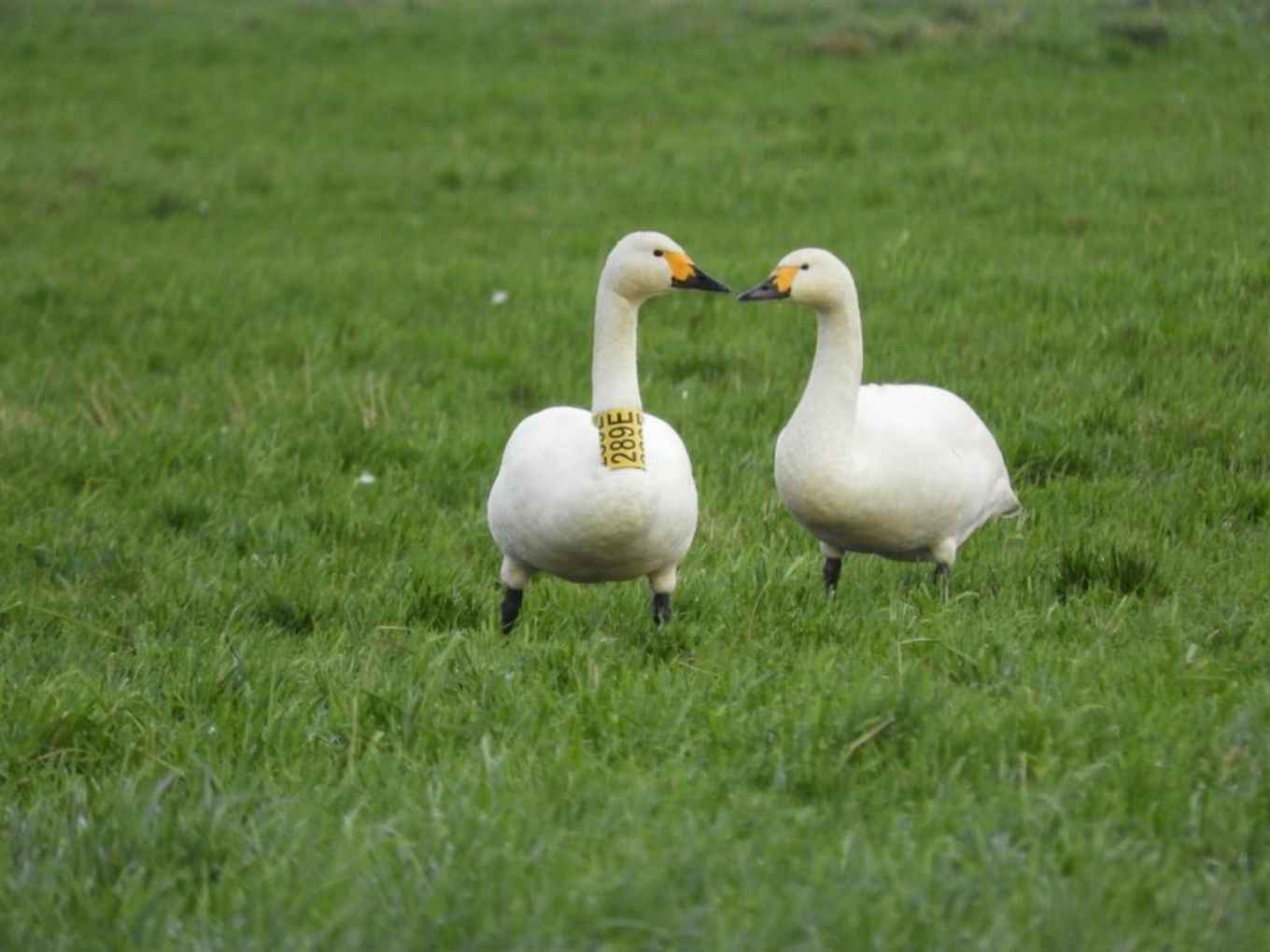Where have the swans gone?
Wintering area Bewick's swans shifts hundreds of kilometers in 50 years
15 June 2020

Why are Bewick's swans, a protected species, declining sharply in Ireland and Britain? And to a lesser extent also in the Netherlands, their main wintering area? "This decline in North-West Europe was not consistent with our data on breeding success and survival", says NIOO animal ecologist Rascha Nuijten. "That's why we started this research." Rascha Nuijten will defend her doctoral thesis on this topic in September at the University of Amsterdam.
The first indication the researchers had, was that in Germany, the number of wintering swans was actually increasing rather than declining. To find out more, an international team was formed that also included members from Estonia and the United Kingdom (Wildfowl & Wetlands Trust).
The research was only possible because of the code some swans carry. Sightings of these tagged animals - often by citizen scientists - offer insight into the whereabouts of individual swans and changes therein. In winter, the swans favour areas with an air temperature of 5.5 °C.
Between tundra and delta
Unlike their 'cousin' the mute swan, Bewick's swans migrate across great distances. They move between their breeding area in the Russian tundra and wintering grounds in North-West Europe and elsewhere.
"We found that both the time spent in the wintering grounds and the location of those wintering grounds changed significantly over the past fifty years", says Nuijten. "The time has been reduced - what we call 'short-staying' - and the area has shifted east, towards the breeding area: 'short-stopping'."
So what has triggered these changes? "We see a similar shift east in the 5°C temperature line across Europe in winter. This would suggest that the changes in the swans' wintering behaviour are driven by the warming of the climate."
Not so traditional after all
Instead of cosying up somewhere in Britain or the Netherlands, the average Bewick's swan now spends winter in spots hundreds of kilometres further to the east, shortening its migratory journey to its breeding grounds considerably.
Compared to 1970, the swans also arrive later and leave earlier. In total, the researchers estimate they have cut their 'winter holiday' short by almost nine weeks. Actually, ‘holiday’ is probably the wrong word: it's the time for recovering and fattening up before the all-important journey to their breeding grounds the next spring.
Should I stay or should I go? Nuijten now knows the answer: "We found out that individual swans aren't changing the duration of their stay during their lifetime. So the observed shifts were caused by directional differences between generations."
Distance is a different story, however. The researchers observed that swans can shorten the distance of their migration within their lifetime. "For a species that has the reputation of being traditional, that's an exciting discovery!"
Nature conservation
The researchers' findings suggest that Bewick's swans are, to an extent, able to adapt to climate change. What the observed changes mean for them in other times of the year is not yet clear. But they do have consequences for the optimal conservation and management of the species, says Nuijten.
"Some places have become much less important for the swans, and other places much more. So when it comes to nature conservation and management, species dynamics - in relation to climate change for instance - need to be taken into consideration."
Paper: Concurrent shifts in wintering distribution and phenology in migratory swans: Individual and generational effects. Rascha J. M. Nuijten, Kevin A. Wood, Trinus Haitjema, Eileen C. Rees & Bart A. Nolet, Global Change Biology, early online 9 June 2020
More information:
Prof. Dr Bart Nolet, Department of Theoretical and Computational Ecology IBED, University of Amsterdam (IBED-UvA) and Netherlands Institute of Ecology (NIOO-KNAW)